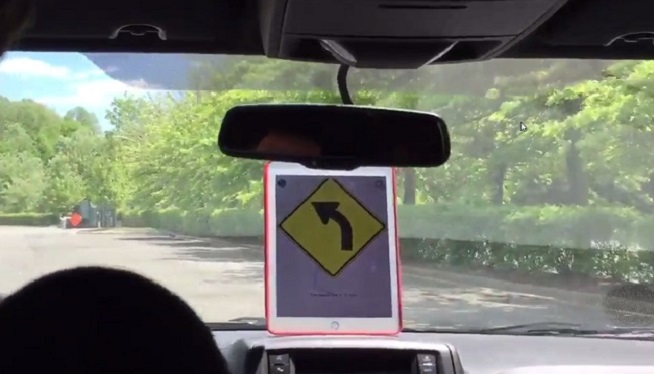FAIRFAX – (WMAL) Yes, you still need to pay attention on the road. For now.
What the experts call “Level Two” automation is starting to hit the mainstream in car manufacturing – full automation is Level Five. As the technology continues to develop, however, Fairfax County is looking to take the lead by cutting through regulatory red tape and being as hospitable as possible to companies looking to push the automated driving envelope.
“Fairfax County has been a leader in Information Technology. That’s sort of been our roots,” Board of Supervisors Chairwoman Sharon Bulova told WMAL. “Being able to help to shape and develop (automated car technology) is pretty exciting.”
Bulova predicts the industry will eventually be just as groundbreaking as cell phones once were. While we aren’t quite at the point where you can get some shut-eye behind the wheel, that reality may be closer than you think – possibly only three to four years away.
Until then, consumers are still getting their heads around the latest features to hit the market. Level Two technology is being produced by manufacturers like Audi and Toyota.
Some fun I had today – taking a ride in a connected car. Yes, you still need to keep an eye on the road. @eTransSystems pic.twitter.com/NW8WJk4N72
— Steve Burns (@StvBurns) May 3, 2017
“The driver still needs to be in control of the vehicle, and aware of the driving environment,” the Virginia Department of Transportation’s Cathy McGhee warned. “It has a number of driver-assist functions that work together.”
Among those features are lane-assist, which keeps drivers in a lane on a highway. It can navigate curves on its own in speed limits above around 40 miles per hour. The car needs to be able to detect lane lines, McGhee said, which is providing an impetus for VDOT to examine where lane striping can be improved.
For slower speeds, these cars have a traffic jam assist mode – something that will prove to be useful in the D.C. region.
“It ensures that you’re not going to rear-end someone,” VDOT’s Virginia Lingham said. “It’ll keep some spacing between you and the car ahead of it.”
Again, it is not an opportunity to doze or catch up on Game of Thrones, and the car makes sure you know that.
“It will give you an alert every twelve seconds or so, reminding you to keep your hands on the wheel,” Lingham said.
Another iteration of the technology is even more cutting-edge: the connected car, which can interact with other connected cars and connected infrastructure.
Cadillac is starting to roll it out in newer models, and the National Highway Traffic Safety Administration is mulling over a rule requiring it in new cars over the next few years, eTrans CEO John Estrada told WMAL.
“Connected vehicles basically are like a little radio in your car that’s transmitting out ten times a second where you are, how fast you’re going, and did you slam on your brakes,” Estrada said. “Two cars can hear each other and the computer in the car does the math and says ‘oh, if you keep driving like that and I keep driving like that, we’re going to hit each other,’ and then provides a warning to the driver so they can avoid that.”
The car can also interact with infrastructure equipped with compatible equipment, alerting the driver of an impending red light or a construction zone, Estrada said.
Full automation isn’t expected to hit the mainstream car market for another three to four years.
Copyright 2017 WMAL. All Rights Reserved. This material may not be published, broadcast, rewritten, or redistributed. (PHOTO: WMAL)





















